Dee Schultz
Osseo-Fairchild High School
Osseo, Wisconsin, USA
About Dee Schultz
My name is Dee Schultz and I am a high school English teacher living in the state of Wisconsin in the United States. Reading has always been an important part of my life, as has spending time with family. As of December 2023, learning how to crochet has become a new way for me to relax and regulate. I’m enjoying expanding my knowledge and skills by creating special gifts for friends and family.
In 1993, my teaching career started in Florida where I first taught English at a private school. Two years later, I fulfilled my dream of becoming a full-time college English Education professor at the University of Central Florida. That opportunity allowed me to travel the country providing literacy instruction workshops to teachers of all subject areas; I also worked closely with Dr. Janet Allen and edited several of her literacy textbooks. In 2002, I left the higher education world and moved to Wisconsin where I have been teaching high school English along with dual-credit and online college writing classes ever since.
How did you learn about The Good Project lesson plans? What made you interested in using the lesson plans?
During the summer of 2023, I spotted a Facebook post that Harvard University was looking for teachers to participate in a grant specifically looking at values and the definition of “good work” and how it connects to our daily lives. After a quick perusal of the proposed curriculum, it seemed as if it might be a good fit for the students at our high school. Character education isn’t something required in our district, and it seemed as if I could easily pair it with the readings and lessons we were already doing in my classes.
Tell us about the students with whom you are teaching the lesson plans. In which class are you using them? What makes them a good fit for your learners?
At first, the plan was to incorporate the lessons with all of my twelfth-grade classes and my advanced tenth grade class. However, I learned very quickly that it worked more seamlessly with the sophomore curriculum. Two lessons in, I switched gears and completed the lessons solely with the sophomores.
The students in my sophomore class were receptive to the material, our class is naturally conducive to discussion in small groups and students are accustomed to sharing their feelings and opinions in this class. The Good Project lesson plans provide plenty of opportunities for discussion and constructive debate, along with internal reflection, which is exactly what my course needs.
What has been a memorable moment from your teaching of the lesson plans?
One of the previous Good Project instructors provided an alternative video lesson to elicit student reaction. Students watched the Prince EA video called “What is School For.” After the video, students were told to think about what the video had to say and to be prepared to discuss it the next day (without sharing their thoughts with their classmates). The next day, I put students in two groups and they brainstormed on poster board what they believed the purpose of school might be.
The student responses to the question “What Is School For” were honest and truly reflective. Many of their answers were negative, such as: I don’t know, stress, sleep deprivation, tears, my parents not to be disappointed in me, NOT handwriting, etc. But, they also had answers all educators want to hear: situational awareness, team building, communication skills, opportunities, finding what you love and hate, social and life skills, learning to work with those you don’t like, etc.
Seeing these 15 students come together to talk about school and their experiences with no filter was eye-opening. We often forget that they carry so many weights in addition to school. School can make or break teens and as educators, we need to be mindful of students’ perceptions of school and education.
What are students gaining or learning from their experiences with the lesson plans?
The Good Project lessons provide experiences for students to evaluate the personal skills and attributes they possess and to determine how best to use them in their lives.
Students described the Unit One Value Sort Activity as “difficult.” It proved to be eye-opening when they were able to see the tallied class results and learn how others’ values compared to their own. After lengthy discussion, students realized that the activity helped them begin to learn where their strengths and weaknesses appeared which gave them a goal to work toward. With that early objective, students were able to individually focus on their personal growth goals.
Each step and lesson along the way helped them look internally and determine how they would react in a given situation, and how the situation might lead to their personal growth now and in the future.
What advice do you have for other educators before they begin teaching the lesson plans?
Teachers shouldn’t feel restricted by the lessons. The lessons are guides and can be tweaked and manipulated to fit each teacher’s and each class’s needs, time constraints, abilities, etc. There were times we did the activities out of order because of something that might have popped up in our curriculum, or our community, and a later lesson went hand-in-hand with what we were doing. There were even times I didn’t give students the prompts for situational experiences and I let students take the wheel in terms of their discussions. Their conversations became organic, rich, and more honest, which was refreshing.
What are students learning that you feel will stick with them? What changes, if any, do you see in the way they approach certain choices or situations in school or in life?
After re-taking the Value Sort six months later, students were surprised to see how their answers changed. I’m not sure if that’s because of their maturation, which tends to happen quickly during their sophomore year, or because of the Good Project discussions and lessons. But, I definitely noticed deeper reflections in their responses to the exit ticket responses, and as they began to consider how their personal choices affected others in their lives.
How do you view the relationship between what you teach in the classroom and your students’ overall development as people?
Because my subject area is English, I’m privileged to have the opportunity to prompt students to participate in discussions about life, literature, and choices daily. We laugh, problem-solve, and sometimes cry together. My students know that I have their best interests at heart and that I’m always honest with them. The trust and bond we share are special and last well into the future.
By adding the Good Project lessons to the sophomore English curriculum this year, it also provided me with more insights into where students believe they fit into the cast of characters in their personal lives and their roles and responsibilities in those relationships.
Why is it important for your learners to understand the meaning of “good work” for themselves, now and in the future?
For students to begin to recognize and assess their values during their teenage years is critical. At this time in their lives, teens are pressured by so many outside influences—family, friends, culture, religion, social media, and school to name just a few. Those pressures don’t subside as they age. If we can equip them to recognize what they value and understand how their values play out in their lives, I think we have done our job. They have the power to question whether a situation is good for themselves and assess the consequences of their actions from multiple points of view. Being equipped with that knowledge can only be helpful to them in the future. The Good Project lessons provide a glimpse into how students value sports, music, spirituality, and other outside obligations, which will possibly affect their choices and work in the future.












